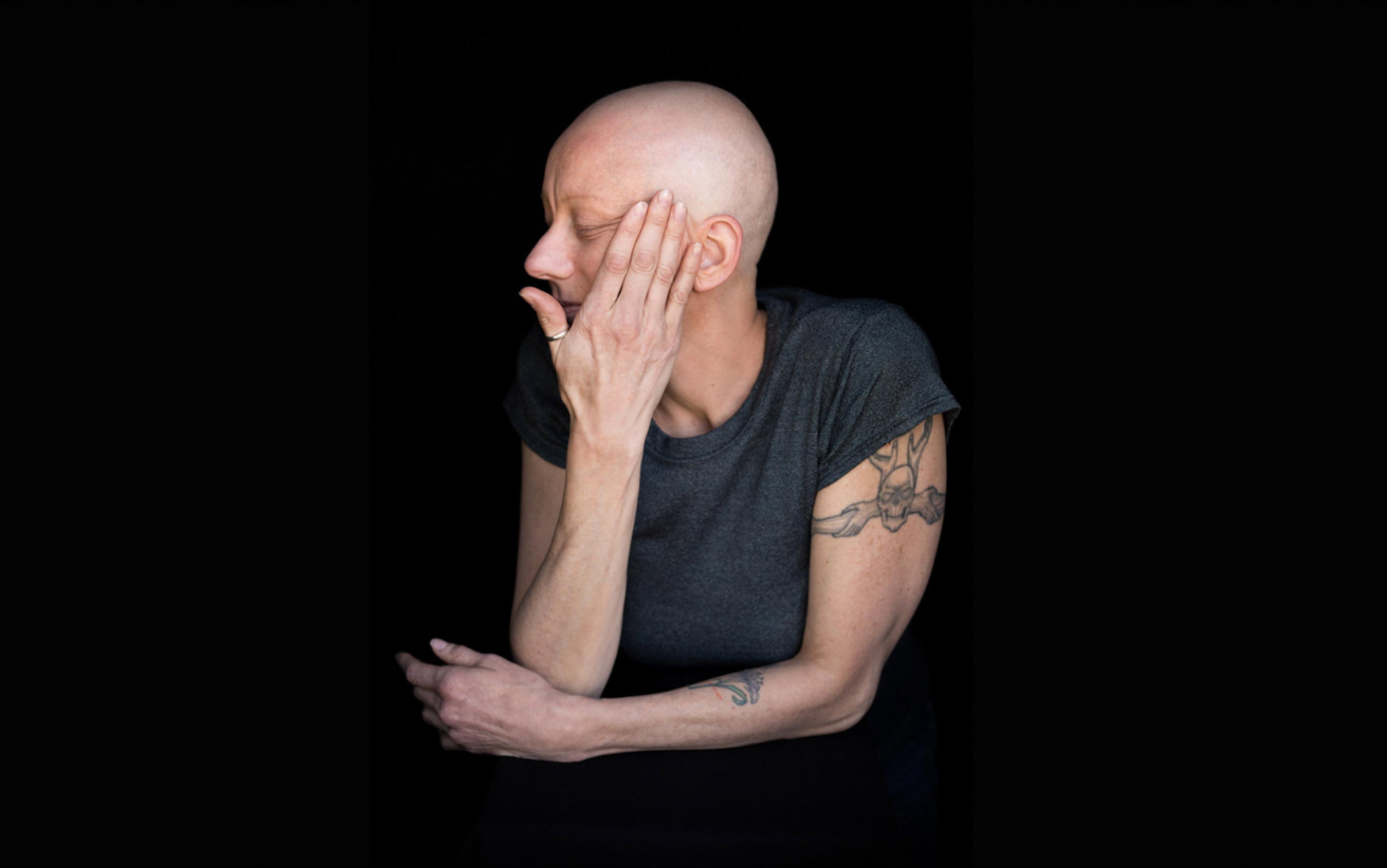The problem of variation haunts medical science. In the 19th century, one of the founders of experimental medicine, the French physiologist Claude Bernard, claimed that individual variability was an obstacle to medical judgment. If we could show that the abnormal was a mere quantitative deviation from the normal, he wrote, we would possess the key to treating any given individual, no matter how he or she veered from the rest. After all, if the pathological is merely a deviation from the normal, then not only the aim but the very possibility of the therapeutic act becomes clear: return the sick individual, organ, cell or system back to a normal state.
This view still guides much of biomedical research; organisms, cells, gene networks and more are routinely perturbed to determine how these systems ‘normally’ function. Researchers disrupt or destroy in order to establish standards and to develop new treatments.
But what are we talking about when we talk about normal physiology? If, as the philosopher Sara Moghaddam-Taaheri wrote in 2011, we see abnormality not as ‘broken normal’ but as a qualitatively different state, it would be difficult to understand how such interventions could restore the sick to health.
While medical researchers might miss such fine points, philosophers of medicine have been parsing the nuances and striving to define ‘normal’ for years. One thought experiment asks us to consider variations on the ends of the spectrum that we would not consider pathological: having green eyes, being colour-blind, being extremely tall or short, having photographic memory, or being a supertaster. These contrast with conditions that could be problematic only in some environments, such as the inability to repair UV damage; with variations that disadvantage only in some cultures or times periods, such as albinism or hearing voices that aren’t there; and with variations so extreme (Tay-Sachs disease, for instance) that they prevent overall functioning.
Yet, even then, life can find a way. For example, there are individuals with a high IQ and otherwise ‘normal’ social life despite having hydrocephalus, a condition in which excessive fluid in the ventricles of the brain enlarges the skull and often results in severe brain damage. How can normality be a scientific concept when its spectrum is so vast? What is normality, really? Do we grasp its meaning? How does one conform to norms?
The Czech philosopher Jiří Vácha provided a helpful taxonomy of normality’s various meanings in 1978. Normality could mean frequent in the sense of being the most common within a population, such as having brown eyes in Mediterranean countries or blue eyes in Nordic countries. It could mean average in the sense of a mathematical mean, such as the average weight or height of a population, often represented with the familiar bell curve, or typical, as in representative of a group, population or general type. Sometimes, normal meant adequate in the sense of being free from defect, deficiency or disorder, and other times it meant optimal in the sense of peak functioning – being physically fit or mentally sharp. Or, it could refer to an ideal Platonic essence, as in the perfect beauty or the perfect body. Finally, there is our basic everyday usage of the word, which often slip-slides among these different meanings and tropes, from the orthodox and standard to what is expected and good.
In any parlance, the specific meaning of ‘normal’ has important consequences, especially if it is given a privileged position in the world. Anything that veers – from having green eyes or hearing voices to living with hydrocephalus – would be abnormal in one sense or another: uncommon, rare, atypical, potentially inadequate, suboptimal or deficient in some way – and in need of being brought back to some norm. Yet, it could be controversial, or just plain odd, to pathologise such variations; especially if they are functional in some way.
This basic insight has lent ambiguity to the word ‘normal’ in medicine for hundreds of years. In the 19th century, just as Bernard was defining disease as deviation from the norm, the Belgian mathematician Adolphe Quetelet was applying statistics to the human body to find a series of ‘types’ across a range of individual variations. Because every variation could be subject to this statistical tool, it seemed that averages could explain anything: hence, height, weight, blood pressure, heart rate, birth and death rates etc could all be presented in nice, even bell curves.
No matter how rare an individual seems, he could still be viewed as normal if the behaviour ensured survival in a given environment
For Quetelet, these averages took on a life of their own; they became not merely a description of nature, but were seen as ideals, as that which ought to be the case. Indeed, the now controversial body mass index (BMI), often used as a measure of health, was originally called the Quetelet Index.
Quetelet claimed that these types captured the homme moyen or ‘average man’ – the ideal human that nature sought to realise, the one right in the centre of what probability theory calls the Gaussian distribution. While such a person need not actually exist in nature, the mathematical figure was seen as the true standard by which to judge deviations as abnormal and, thus, deficient. Consequently, ‘the individual was synonymous with error, while the average person represented the true human being’. Together with Bernard’s views, this was an important step in the privileging of normality that we see today.
The 20th-century French philosopher Georges Canguilhem had a more modern point of view: by chasing the concept of normality, the 19th-century scientists had failed to capture what evolutionary biology says about the variability of organisms. In Le normal et le pathologique (1943), Canguilhem described Charles Darwin’s idea that organisms establish and maintain regularities, patterns of functioning and behaviour to meet the changing demands of living and survival. Canguilhem used the term ‘norm’ to refer to the different regulatory processes, from the internal regulation of hormones to shifting dietary regimes, to remind us that, no matter how rare or deviant an individual seems, he could still be viewed as normal if the behaviour ensured survival in a given environment.
In short, normality is all about context. What is normal for one individual could be insufferable for another, and the same individual could be normal in one environment yet not in another. Just take a look at inborn differences in the ability to metabolise lactose, or acquired variations such as endurance athletes having an enlarged heart and lower resting heart rate. Such examples help to illustrate that normality varies from one individual to the next, and so the mere presence of a variation, or even an anomaly, is not sufficient to understand the pathological.
Environmental relativity is everywhere. There are individuals with asymptomatic hypertension who, upon moving to higher altitudes, begin to suffer chest pains, nausea or shortness of breath from the change. There are those who exhibit variations in the ability to repair UV damage from sunlight ranging from mild skin damage to life-threatening skin malignancies and cancers. There is dyslexia, which some have claimed need only be understood as harmful where reading is a necessary cultural practice. Even a given environment is neither normal nor abnormal. Instead, it is the relationship between the individual and an environment that determines the line between normal and abnormal variations.
Normality is neither absolute nor universal. Yet as far as Canguilhem is concerned, such strictures should never stop us from viewing healthy and pathological phenomena from a biological point of view. Rather, we must see health and disease through their own specific physiological, behavioural and structural regularities, their own causal chains, and their own distinct biological norms.
Toward this end, Canguilhem proposed a distinction between what he termed ‘propulsive’ and ‘repulsive’ norms. Propulsive norms tolerate perturbations and flexibly adapt to changing demands; they allow the individual to overcome challenges. A propulsive immune response would involve the production of antibodies to counter invading germs and toxins.
Repulsive norms avoid perturbations and constrict the individual’s functioning; their very fragility demands a restricted environment. A repulsive immune response to foreign invaders might involve inflammation resulting in hypersensitivity and extreme allergic reactions such as anaphylaxis.
Canguilhem’s inductive approach is at odds with 19th-century medicine and the very concept of normality as a fixed quality, an idea still so prevalent today. Rather than begin with a rigid definition of normality, from which abnormality follows, the Canguilhem method starts with physiology and then seeks theories to explain what is observed.
This produces a line of investigation that medical philosophers now call naturalisation. Clarity might come from concepts such as robustness (maintaining a system despite perturbations), plasticity (shifting between different functional levels), homeodynamics (balancing the effects of ageing) and fragility (increased sensitivity to perturbations). These and related concepts from systems biology – and not the idea of normality – capture what is specific to health and disease.
It could be that the most effective intervention involves changing the environment, and not the patient who feels ill
A systems biology approach also fits more precisely with the relativistic world in which species are constantly changing, and an organism and environment must be in sync. After all, living systems are robust or homeostatic or fragile only with respect to specific internal and external conditions. You cannot say that an immune system, genetic network or a whole organism is robust without specifying a host of biological variables and the environmental parameters that it faces. Living systems are uniquely individual and truly inseparable from their milieu. This forces us to ask: healthy for whom? Relative to what internal or external conditions?
Such concepts are crucial to understanding health and treating disease. The approach can help to destigmatise disease by suggesting that both health and disease are normal, reflecting distinct regularities and ways of living. Disease is neither unnatural nor does it signal the absence of norms: it is a matter of having different norms. This hardly means we should valorise disease; we don’t need to see suffering as beneficial or character-building, nor must we see in mental illness a path to enlightenment. Instead, as naturalisation implies, just because health and disease are normal they are hardly equal or indistinguishable.
Seeing our biology through the lens of naturalisation also provides a new perspective on health preferences. While Canguilhem’s philosophy implies that it is up to the individual to determine what is healthy, this need not mean that health is simply a question of subjective choices or of granting individuals full authority, eg I prefer X whereas you prefer Y and therefore X is healthy for me. Instead, health is individual because of how our unique life histories and behaviours interact with our bodies and minds. Medicine should thus strive to specify what is objectively preferable for every individual given his or her own biology, environment and mode of life.
Taken together, all this suggests that medicine cannot be about restoring previous norms, which might not exist since disease and the mere passage of time irrevocably change living systems. Nor is it about trying to make individuals conform to one-size-fits-all standards and treatments dictated by medical authorities and guidelines, since what is healthy for one individual or system could damage another. Instead, the new, individualised medicine should entail a collaboration with the individual to find a new way of functioning that is specific to that unique physiology and the constraints and possibilities of one’s environment. In many cases, it could be that the most effective intervention involves changing the environment, and not the patient who feels ill.
This fresh perspective has never been more critical, given worries that medical institutions are pathologising normality – enforcing a form of treatment that reflects social or political values instead of actual disease. Whether we are talking about the surge of Ritalin in the classroom or the constantly changing advice about what to eat, it appears that what we need most is a philosophy of medicine that is patient-oriented and attuned to the context of the individual’s life history and the environment in which one lives.






